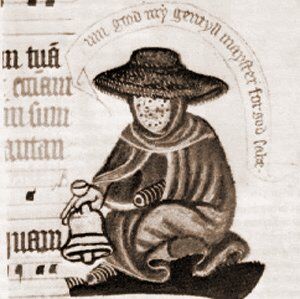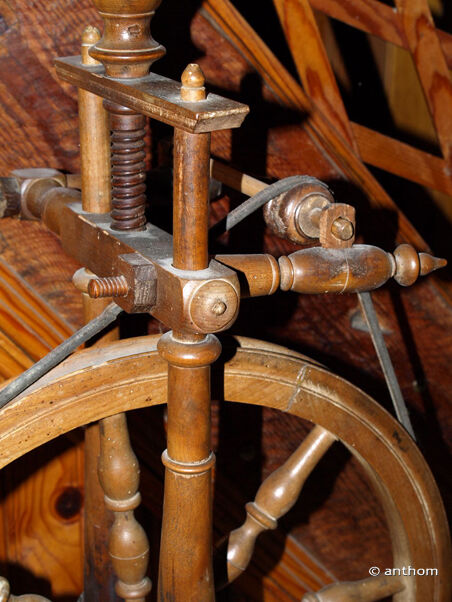The concepts covered in this fact sheet go beyond those seen in high school. It is intended as a supplement for those who are curious to learn more.
Before the urban boom, the inhabitants of existing towns were generally bound to their suzerain by an oath of loyalty and obligation. Gradually, towns claimed the right to self-management, i.e. the right to make all decisions concerning activities within the enclosure. By obtaining a charter of freedom, towns became autonomous and functioned as communes.
As strongly hierarchical as the feudal system, city society nevertheless had new social classes that were unique to cities.
The bourgeoisie, a new class, was made up of wealthy merchants and businessmen. The arrival of the Grand Commerce had favored this social class, for whom commercial activities represented the main source of their wealth. Merchants also benefited from the boom in textile production and banking. A few masters of handicrafts had also managed to accumulate enough wealth to join the rising classes. These classes comprised the wealthiest city dwellers, along with the nobility and high clergy.
Among craftsmen, there was another form of hierarchy. It was even twofold: valuation according to the task performed, and valuation according to skill level. The most skilled were the master craftsmen. They ran their own workshops and collected the money from sales. The master often hired a journeyman who was not paid according to sales or production, but according to the number of hours worked. Finally, craftsmen also had apprentices who, often placed by their parents, tried to learn the trade in order to become a journeyman.
The people were totally excluded from power. They were made up of the many apprentices who wanted to become journeymen to master craftsmen and salaried workers.
Many towns also had a neighborhood occupied by the Jewish community. These communities were part of the city's various activities, but their quality of life greatly deteriorated from the 12th century onwards. Many people accused them of murder and discriminated against them. Jewish communities were sometimes even expelled from the kingdom.
Another social group, the seriously ill, suffered terribly from their situation. For example, lepers (leprosy is a contagious disease affecting the skin and mucous membranes) lived apart from society, suffering the disgust of other inhabitants and, on occasion, acts of violence.

Lepers had to announce their presence. Here, the warning is given by the ringing of a bell.
At the very bottom of the social pyramid were the peasants. Although the city depended on them for food, the peasants had no rights and lived in squalor and insalubrity. They worked hard and had no hope of improving their condition.
The arrival of many new residents in the towns has led to a wide diversification of trades.
In the countryside, peasants had to be able to carry out all stages of fabric production. In town, on the other hand, tasks were more specialized. Carding, combing, spinning, weaving, dyeing, fulling and final finishing are examples of tasks that required a different craftsman.
In the second half of the 11th century, the textile industry underwent great development. This was mainly due to the introduction of oriental devices: the spinning wheel and the weaving loom. These two devices subsequently underwent a number of modifications designed to improve them.

The loom

The weaving wheel
Textiles had become a highly profitable industry, thanks to the perfecting of tools and the specialization of tasks. Many employees, mostly women, had to be hired for this production activity. Generally, the most polluting activities, such as dyeing, were segregated and had to be carried out near waterways.
Other crafts were similarly categorized and specialized. This was particularly true of the food industry. The hierarchy of food workers was based on two factors: the level of specialization required and hygiene.
By joining forces in guilds, merchants were better able to defend themselves, face competition more effectively and organize mutual aid more efficiently. All commercial and craft activities were organized into guilds. Members undertook to respect the collective discipline of their profession. Merchants helped each other. In addition, guilds were staffed by policemen, increasing security and good trade.
Most of these guilds were approved by the authorities (such as the suzerain) and thus obtained a monopoly of trade in a given sector. In some cases, guilds also benefited from religious supervision. For example, all goldsmiths (craftsmen who made objects from precious metals) recognized Saint-Eloi as their patron saint.
